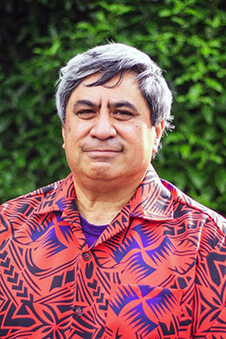Pasifika children are disproportionately represented in Aotearoa New Zealand’s child protection system but there are many nuances at play, new University of Otago research shows.
The study, published in Kōtuitui: New Zealand Journal of Social Sciences Online, reports rates of Pasifika children’s contact with Oranga Tamariki – Ministry for Children at three outcomes: substantiation that abuse has occurred, having a family group conference, or entering care (placement).
Researchers used data from nearly 800,000 children (aged 17 or under) in Aotearoa in 2019 and 2020. Of those, nearly 80,000 children had contact with Oranga Tamariki.
 Dr Jesse Kokaua.
Dr Jesse Kokaua.
Lead author Dr Jesse Kokaua, of the Va'a o Tautai – Centre for Pacific Health, says Pasifika children are three times more likely to have a substantiated finding of abuse compared with non-Māori and non-Pasifika (NMNP) children.
Pasifika children also have double the rate of entering care. After controlling for demographic factors, these rates are still double the rate at substantiation and 1.25 times at care entry.
“However, beneath these broad findings, there are many complexities relating to different types of system contact, differences associated with socio-economic status, and ethnic differences within Pacific children,” Dr Kokaua says.
There are more substantiated findings of abuse for Pasifika children compared with other groups, but there is a larger reduction between this and the number of children put into care than other groups.
“Sole Pasifika children have half the placement rate of non-Maori-non-Pasifika children, but Pasifika plus another ethnicity (the majority of Pasifika children) have higher rates.”
Researchers expected to see differences with socio-economic deprivation as Pacific children are more likely to live in areas of high deprivation compared with children from other communities.
“Yet, socio-economic deprivation appears to increase the number of substantiated findings of abuse and family group conferences for Pasifika children, but not entry to care.”
Co-author Associate Professor Emily Keddell, of the Social and Community Work Programme, says inequities for Pasifika people have rarely been examined and more attention is needed.
“Significant differences after controlling for demographic factors lead us to consider biases that may be at play.”
For example, it may be that more Pasifika social workers with the relevant skills are in offices in high deprivation areas that more effectively practice with Pasifika families, or that Pasifika families in more affluent areas face more racism in decision-making than in poorer areas.
While researchers have “scratched the surface” in understanding the differences for Pasifika children in the child protection system, more work needs to be done to understand the potential for biases, she says.
Publication details
Child protection inequalities for Pasifika children in Aotearoa New Zealand: diverse realities
Jesse Kokaua, Emily Keddell, Gabrielle Davie, Tautala Aiono-Faletolu and Len Cook
Kōtuitui: New Zealand Journal of Social Sciences Online
For more information, contact:
Dr Jesse Kokaua
Senior Research Fellow
Va'a O Tautai | Centre for Pacific Health
Division of Health Sciences
Mob +64 21 809 133
Email jesse.kokaua@otago.ac.nz
Jessica Wilson
Adviser Media Engagement
University of Otago
Mob +64 21 279 5016
Email jessica.wilson@otago.ac.nz